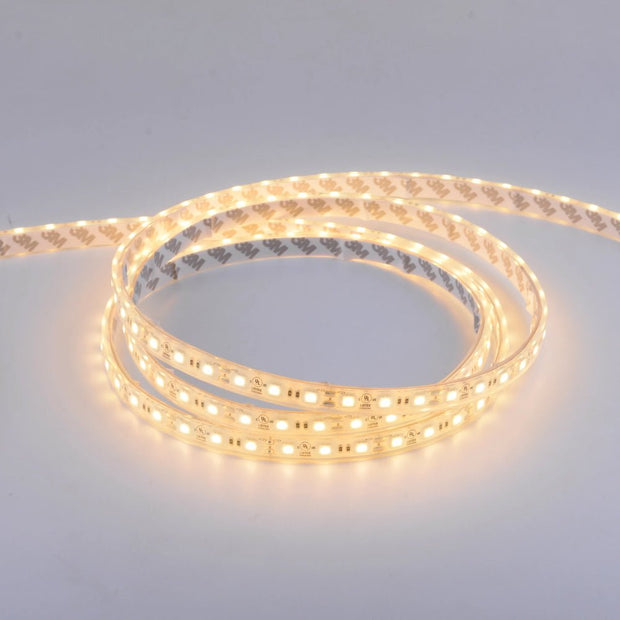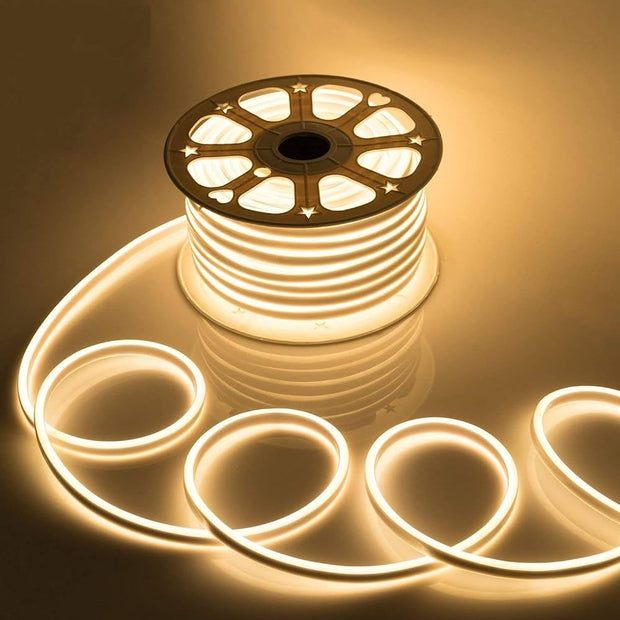Bright LED neon strips have changed the game for building illumination because they shine so vividly and boost visibility in ways traditional lighting just cant match. The visual punch these lights deliver makes structures stand out at night while actually improving safety around them too. Architects love working with these strips since they come in all sorts of hues and brightness levels. This means designers can craft exactly the atmosphere they want for different projects whether its creating a welcoming vibe for families living in apartments or attracting attention for retail storefronts. What really sets these apart is how adaptable they are. Design teams can wrap them around columns, curve them along walls, or even make elaborate light sculptures that complement complex building designs without compromising functionality.
LED neon strips stand out for their remarkable durability, which works great for installations inside buildings as well as outside in all weather. Made from tough materials, these lighting solutions handle pretty much anything nature throws at them, whether it's damp air or strong sunlight exposure over time. What really matters is how consistently they keep shining bright no matter where they're placed around a property. Most quality LED neon products last way beyond 50 thousand hours of operation, so businesses save money on repairs and replacements down the road. For architects planning big scale projects that need good lighting for years to come, this kind of longevity means fewer headaches later on when trying to maintain proper illumination levels throughout different areas. The combination of lasting power and dependable performance positions LED neon strips as smart picks across many building designs, delivering practical benefits while keeping expenses under control in the long run.
COB LED strips, also known as Chip On Board technology, stand out because they deliver really smooth and consistent lighting across surfaces. Architects love these for showcasing building details since there are no annoying bright spots ruining the effect. The way the colors mix together evenly just makes rooms look better overall. What's great about COB strips is how small they actually are. They fit into narrow gaps and corners where other lights wouldn't go, yet still throw off plenty of brightness when needed. Plus, they eat up way less electricity compared to traditional options while putting out just as much light. For anyone concerned about saving money on bills or reducing environmental impact, COB LEDs check all the boxes for good looks and green credentials at the same time.
What makes addressable LED strips stand out is how they let each tiny light work independently, giving total control over colors. Designers love this because it means creating amazing visual displays where colors shift dynamically across buildings or spaces. Think about concert venues where lights pulse with music or office lobbies that tell stories through changing hues at different times of day. These strips really open doors for creativity beyond basic illumination. Events become special when organizers can synchronize thousands of lights for holidays or product launches. Plus, connecting them to smart systems adds another layer of interaction. People can now adjust lighting instantly based on what feels right for a space, whether it's setting a cozy mood or matching corporate branding requirements. This kind of flexibility transforms ordinary architecture into something much more engaging and responsive to its surroundings.
LED neon strips offer a fresh way to bring out the curves and textures in buildings, making them look better visually. Architects love how these lights can spotlight all sorts of fine details on facades, really letting the character of a structure stand out. What makes them special is the color options available. Different hues create striking contrasts between light areas and shadowed spots across surfaces. When colors mix with shadows just right, they give buildings a sense of depth that changes depending on where someone stands. Plus, installing these LED strips doesn't mess with the building's strength at all. They stick right onto existing surfaces without making things look cluttered or bulky, which is a big plus for modern designs where clean lines matter so much.
Outdoor LED strip lights have become game changers when it comes to transforming how buildings and landscapes look at night. They create this amazing layered effect that really brings out those architectural details we often miss during the day, plus they highlight all sorts of natural features in outdoor areas. The result? Spaces feel much safer and welcoming after dark. When placed strategically around the property, these LED neon strips light up walkways, garden beds, even those cool modern structures people build nowadays. Safety gets better too because folks can actually see where they're going. And let's face it, nobody wants to trip over something in the dark! Beyond just looking good, these lighting setups actually boost property values quite a bit. Real estate agents will tell you that well-lit properties attract more visitors and potential buyers. So while some might think about outdoor lighting as just another expense, it turns out to be pretty smart investment money wise as well.
Getting proper weather protection for outdoor LED strip lights makes all the difference in how long they last. The main thing is sealing out moisture and adding those UV resistant coatings so they don't get damaged by sun exposure. When picking fixtures, look at the IP rating first since this tells us exactly what kind of elements they can handle from rainwater to dirt buildup. Most people forget about regular upkeep though. A quick clean every now and then plus checking those electrical connections goes a long way toward keeping everything working properly. Taking these steps extends the life span of those outdoor LED strips while maintaining both their safety features and overall performance over time.

Putting LED neon strips around corners and complicated shapes isn't easy, but getting the hang of some basic methods really changes things. When it comes to bending and cutting these strips, there are tricks that let them connect smoothly while still keeping their bright glow intact. Corner connectors work wonders, and there are now special flexible versions of LED neon strips that wrap nicely around those tricky spots in buildings. Always sketch out where everything goes first though. This saves money on materials and gets those angles just right so the whole look comes together properly. With attention to these details, addressable LED strip installations stay clean and professional looking, adding real value to architectural designs across different spaces.

LED neon strips make sense for anyone watching their energy bills since they eat up way less power than old school lighting solutions. We're talking around 75% less electricity when compared to those traditional bulbs or fluorescent tubes, which means real money saved on monthly power costs. Take a look at what happens in practice: businesses get the same bright illumination but pay way less for it, no drop in quality whatsoever. What's great about all this is that companies save cash while ticking boxes on their sustainability reports too. Retail stores, restaurants even manufacturing plants across the country are switching over because it cuts expenses AND helps them look good environmentally. Some places have reported slashing their annual energy spend by thousands just from making the switch to LED neon strips.
LED neon strips tend to give businesses a better return on their money because they cut down on running costs and hardly need any maintenance at all. For most commercial installations, switching from traditional lighting to LED usually starts paying off within around two to three years. That kind of quick payoff makes a real difference to bottom lines, so these lights aren't just good for the planet but actually make financial sense too. The fact that LED strips can last anywhere between 40,000 to 50,000 hours means stores and offices don't have to replace them nearly as often as other types of lighting. Fewer replacements translate into steadier budgets without those unexpected repair bills popping up every few months. Whether it's a small shop front or an entire office building, this long life span helps keep expenses under control for years after installation.
 Hot News
Hot News2024-09-26
2024-09-23
2024-09-20
2024-09-17
2024-05-27
2024-05-27